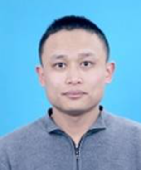
Speakers
| Prof. Gang Zhang Harbin Institute of Technology Gang Zhang has been a Full Professor at the Research Center of Satellite Technology, Harbin Institute of Technology since 2019. He received the B.S. degree from the School of Mathematics at Jilin University, Changchun, China, in 2007, and the Ph.D. degree in Aerospace Engineering from Harbin Institute of Technology, Harbin, China, in 2012. He was a Visiting Scholar at the Department of Aerospace Engineering, Texas A&M University from 2009 to 2010. His research areas are orbit dynamics and control, trajectory optimization, and uncertainty analysis. He has published more than 50 journal papers as the first/corresponding author, including 20 papers in JGCD and IEEE TAES. He received the National Excellent Doctoral Dissertation Award in Aerospace Engineering, and several Science and Technology Awards in provincial and ministerial level. He won the Champion of the 10th China Trajectory Optimization Competition as the Team Leader. Now He serves as the Associate Editor of IEEE Transactions on Aerospace and Electronic Systems, and the editorial board of several international journals. He participated in several satellite missions, including the world’s first microsatellite (Longjiang-2) to complete Earth-to-Moon transfer, near-moon braking, and circumlunar flight. |
Prof. Dinghe Li Civil Aviation University of China Li Dinghe, a professor at the Civil Aviation University of China, serves as the Director of the Personnel Department and the Dean of the Sino-European Institute of Aviation Engineering. As a doctoral supervisor, he is a recipient of the National Civil Aviation Blue Sky Medal. He currently holds the positions of Director of the Joint Laboratory for Commercial Aircraft Engine Maintenance Technology Development, Standing Committee Member of the Textile Structural Composites Branch of the Chinese Society of Composite Materials, Member of the Aerostat Sub-Technical Committee of the National Professional Standardization Technical Committee, Member of the Aircraft Maintenance Subcommittee of the National Civil Aviation Terminology Approval Committee, and Member of the International Talent Cultivation Branch of the Chinese Aviation Education Society. Additionally, he serves as the Young Editorial Director and Editorial Board Member of the Journal of Applied Mechanics, Young Editorial Board Member of Aviation Science and Technology, and Young Editorial Board Member of the Journal of the Civil Aviation University of China. He has published over 100 academic journal papers and authored two monographs. His accolades include the First Prize of the Civil Aviation Science and Technology Award from the China Air Transport Association (1/15), the Second Prize of the Tianjin Natural Science Award (1/7), the Second Prize of the Invention and Innovation Award from the China Invention Association (6/6), and the First Prize of the Tianjin Teaching Achievement Award (1/12). In 2015, he was selected as a second-tier candidate for the Tianjin "131" Innovative Talent Training Program. He has been listed in the Career-Long Impact List of the World's Top 2% Scientists (2025) and the Single-Year Impact List (2020-2025). In 2023, he received funding from the Tianjin Outstanding Youth Science Fund. His research focuses on the safety of civil aircraft in service, encompassing high-precision plate and shell analysis theory, multi-physics and multi-scale analysis theory, composite structure repair technology, and structural health monitoring and management technology. |
|
| Prof. Xueye Chen Ludong University Chen Xueye, Professor, Graduate Supervisor, Taishan Scholar Young Expert, Outstanding Provincial Science and Technology Worker, Provincial Young Talent of Excellence, Provincial Hundred-Thousand-Talent Program, Outstanding Graduate Supervisor of Shandong Province, Excellent Master's Thesis Advisor of Shandong Province, has served as a visiting scholar at Nanyang Technological University in Singapore and The Hong Kong Polytechnic University. From 2023 to 2025, she was consecutively selected for the ScholarGPS Top 0.05% Scholars (the only selected scholar from Ludong University). From 2020 to 2025, she was consecutively listed in Stanford University's and Elsevier's joint publication "Top 2% of Scientists Worldwide," consistently ranking first in Ludong University's list. Her research interests include flexible sensing, microfluidics, and functional surfaces. She has led over 20 projects, including the National Natural Science Foundation, Liaoning Province Young Talent Fund, and Shandong Province Natural Science Foundation. She has published more than 190 SCI papers as the first or corresponding author, holds over 40 authorized patents, and 3 software copyrights. She has received 8 provincial-level awards, including the Liaoning Province Natural Science Award, as the first awardee, of which 3 were first prizes, along with multiple municipal and university-level awards. |


